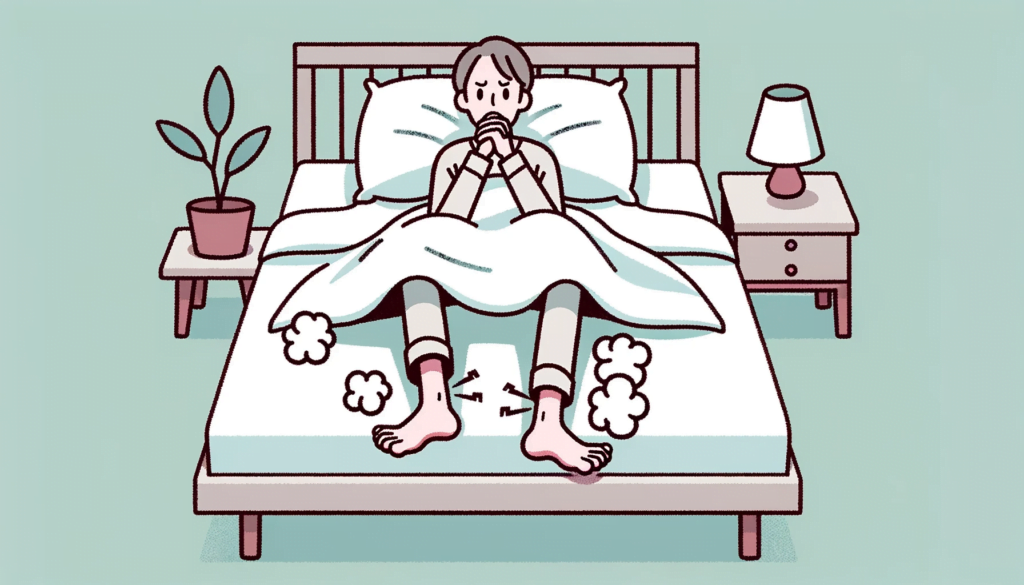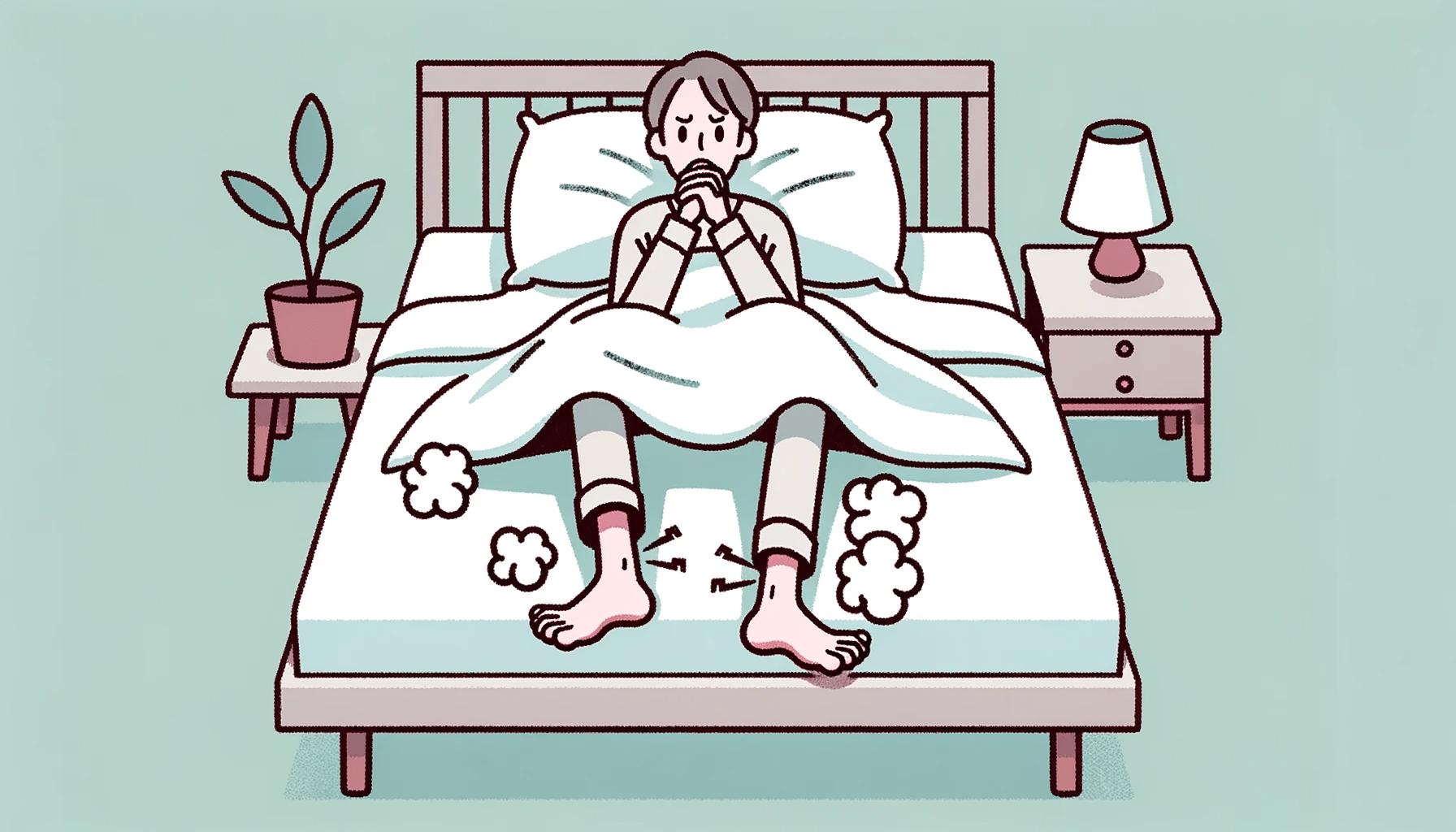Restless Leg Syndrome (RLS) is a neurological disorder characterized by uncomfortable sensations in the legs and an irresistible urge to move. While the exact cause of RLS remains unclear, factors like iron deficiency and pregnancy may contribute to its development.
Massage therapy has shown promise in alleviating RLS symptoms by improving blood circulation, reducing discomfort, and relieving stress. By incorporating massage therapy into their treatment plan, individuals with RLS can potentially experience greater relief and an improved quality of life.
Key Takeaways
- Massage therapy can provide relief from Restless Leg Syndrome symptoms such as tingling legs, twitchy sensations, and the need to move often.
- Massage therapy improves blood circulation and lymph fluid circulation, helping to alleviate RLS symptoms.
- Massage therapy can help relieve stress associated with RLS and enhance relaxation and better sleep.
- Regular sessions with a licensed massage therapist, combined with other stress-relieving techniques, can provide significant benefits for individuals with RLS.
Symptoms of Restless Leg Syndrome

Restless Leg Syndrome is characterized by specific symptoms that include tingling legs, a sensation of bugs crawling on the legs, the need to move often, twitchy and painful sensations in the calves, thighs, or ankles, and aggravation of symptoms when sitting still or lying down. These symptoms can be disruptive and interfere with daily activities and sleep.
When it comes to treatment options for Restless Leg Syndrome, there are both medical and non-medical approaches. Lifestyle changes such as regular exercise, maintaining a consistent sleep schedule, avoiding caffeine and alcohol, and managing stress can help alleviate symptoms. Additionally, certain medications may be prescribed to help manage the condition. It is important to work with a healthcare professional to determine the most suitable treatment plan for each individual.
Causes of Restless Leg Syndrome

One of the contributing factors to the development of Restless Leg Syndrome is the presence of underlying medical issues such as diabetes, kidney disease, and arthritis. These conditions can disrupt the normal functioning of the nervous system and lead to the onset of RLS symptoms.
Another cause of RLS is iron deficiency, which can result in a lack of muscle rest and poor circulation. Managing iron deficiency through dietary changes or supplements can help alleviate RLS symptoms.
Additionally, alternative treatments for RLS include massage therapy, which can improve blood circulation and provide relief from restless legs. Regular sessions with a licensed massage therapist, combined with other stress-relieving techniques, can enhance the benefits of massage in managing RLS.
It is important to consult with healthcare providers for recommendations specific to individual cases of RLS.
Benefits of Massage Therapy for RLS

Massage therapy offers several benefits for individuals with Restless Leg Syndrome (RLS), including improved blood circulation and relief from RLS symptoms.
By applying pressure and manipulating the muscles, massage therapists can help improve blood flow throughout the body. This increased circulation can be especially beneficial for individuals with RLS, as it can help reduce the uncomfortable sensations and twitching associated with the condition.
Additionally, massage therapy has been shown to lower blood pressure, which can further alleviate symptoms of RLS. The pressure applied by a massage therapist can help blood move more efficiently through the veins, improving overall circulation and reducing the likelihood of RLS symptoms.
Relieving Stress and Enhancing Sleep With Massage

To enhance sleep and relieve stress in individuals with Restless Leg Syndrome (RLS), massage therapy can be an effective option. The impact of stress on RLS symptoms is well-documented, with stress exacerbating the twitchy and painful sensations in the legs. Massage therapy has been shown to have positive effects on overall well-being, including stress reduction and improved sleep quality.
Massage therapy promotes relaxation and reduces anxiety by activating the body’s relaxation response and increasing the production of endorphins, the body’s natural painkillers. This can help individuals with RLS experience a deeper and more restful sleep.
In addition to its stress-relieving effects, massage therapy also improves blood circulation and lymph fluid circulation. This can help alleviate RLS symptoms by increasing blood flow to the legs and reducing muscle tension and discomfort.
Considering the vicious cycle of stress and RLS symptoms, incorporating massage therapy into a treatment plan for RLS can be highly beneficial. It is worth exploring the option of regular sessions with a licensed massage therapist, and even one session per month can provide significant benefits when combined with other stress-relieving techniques.
Considerations for Massage Therapy

When considering incorporating massage therapy into a treatment plan for Restless Leg Syndrome (RLS), it is important to explore the potential benefits and consult with a licensed massage therapist. Here are some considerations to keep in mind:
- Effectiveness of massage therapy for RLS compared to other treatments: While massage therapy has shown promise in relieving RLS symptoms, it is important to note that its effectiveness may vary from person to person. Some individuals may find significant relief with regular massage sessions, while others may require additional treatments or therapies.
- Potential side effects of massage therapy for RLS: Generally, massage therapy is considered safe for most individuals. However, it is important to discuss any pre-existing medical conditions or concerns with the massage therapist to ensure that the treatment is appropriate for you. Additionally, some individuals may experience temporary soreness or discomfort after a massage session, but this usually resolves within a day or two.
- Consultation with a licensed massage therapist: To ensure the best possible outcome, it is recommended to consult with a licensed massage therapist who has experience in treating RLS. They can assess your specific condition, tailor the treatment plan to your needs, and provide guidance on the frequency and duration of the massage sessions.
Frequently Asked Questions
Can Massage Therapy Completely Cure Restless Leg Syndrome?
Massage therapy can provide relief from Restless Leg Syndrome (RLS) symptoms, such as improved blood circulation and lower blood pressure. While it may not completely cure RLS, it is an effective alternative treatment when combined with other stress-relieving techniques.
Are There Any Side Effects or Risks Associated With Massage Therapy for Rls?
Massage therapy for RLS is generally safe and effective, with minimal side effects. Risks are low when performed by licensed therapists. Duration of improvement varies, but regular sessions, combined with other therapies, can provide optimal results. Specific massage techniques may enhance outcomes.
How Long Does It Typically Take to See Improvement in RLS Symptoms With Massage Therapy?
The timeline for improvement in RLS symptoms with massage therapy varies depending on individual factors such as severity of symptoms and frequency of sessions. However, many individuals report experiencing relief after several sessions, with continued improvement over time.
Can Massage Therapy Be Used as a Standalone Treatment for RLS, or Does It Need to Be Combined With Other Therapies?
Massage therapy can be used as a standalone treatment for Restless Leg Syndrome (RLS), but it is often more effective when combined with other therapies. It is recommended to consult with healthcare providers for personalized treatment plans.
Are There Any Specific Massage Techniques That Are More Effective for Treating RLS Symptoms?
Specific massage techniques can be effective in treating symptoms of Restless Leg Syndrome (RLS). However, it is important to note that the effectiveness of massage therapy for RLS may vary depending on individual cases and preferences.
Conclusion
In conclusion, massage therapy offers a potential solution for individuals suffering from Restless Leg Syndrome (RLS). By addressing the uncomfortable sensations and reducing stress levels, massage therapy can improve blood circulation, alleviate RLS symptoms, and enhance overall well-being.
Incorporating regular sessions with a licensed massage therapist into a comprehensive treatment plan, alongside other lifestyle modifications, may lead to a significant improvement in RLS symptoms and a better quality of life for individuals affected by this neurological disorder.


















